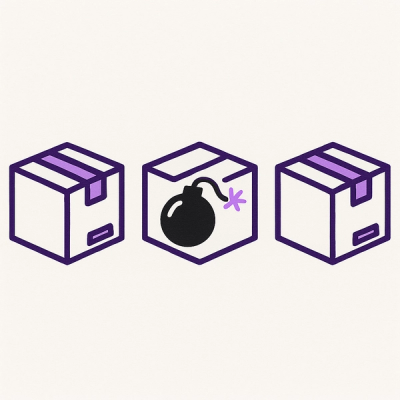Temporal-Forge
(A Next-Gen Temporal Workflow Orchestration Framework for TypeScript)






Temporal-Forge supercharges Temporal.io workflows by eliminating boilerplate, automating state management, and enabling seamless hierarchical orchestration.
- Decorator-Based API → Write workflows in a declarative, intuitive way
- Event-Driven Updates → No polling—Workflows automatically synchronize state
- State Normalization & Hierarchical Management → Built-in entity normalization & child workflow orchestration
- ContinueAsNew & Long-Running Workflow Support → Efficiently persists state and prevents history bloat
- API Integration → Load & sync external data in real-time
- Built-in Observability → OpenTelemetry support for tracing and debugging
💡 Why Use Temporal-Forge?
- 🚀 Faster Workflow Development → No need to manually manage signals, queries, or updates.
- 🧠 Intelligent State Management → Normalized entities with automatic denormalization and caching.
- 🎯 Precision Updates → Changes only propagate where needed, eliminating redundant state syncing.
- 🤖 Automatic Child Workflow Handling → Start, stop, and update workflows without writing extra logic.
📌 Key Features
1️⃣ Step-Based Workflow Execution
Temporal-Forge simplifies workflow design using decorators like @Step(), @Query(), and @Signal() to define workflow logic.
- Step-based execution with dependencies
- Conditional branching & dynamic workflow control
- Lifecycle hooks (
@Before(), @After(), @Hook())
2️⃣ Advanced Stateful Workflow Management
Stateful workflows handle complex entity relationships with automatic state tracking.
✔ Automatic child workflow execution & cancellation
✔ Parent workflows automatically sync child state changes
✔ Limitless nesting of parent-child workflows
3️⃣ Event-Driven, Subscription-Based Updates (No Polling)
- Entities update automatically across workflows
- Only relevant workflows receive updates via event-driven signals
- Ancestor tracking prevents infinite loops & redundant updates
💡 How it Works? → Each workflow subscribes to only the data it cares about.
If an entity updates, only dependent workflows receive updates, ensuring low-latency state propagation.
4️⃣ Normalized State & Cached Denormalization
State is structured using normalizr, ensuring efficient, normalized entity management.
✔ Automatically flattens nested relationships
✔ StateManager & limitRecursion cache queries to optimize lookups
✔ Denormalization is fully cached & optimized
5️⃣ Auto-Managed Child Workflow Lifecycle
- ✅ Starts child workflows when needed
- ✅ Cancels workflows when dependencies change
- ✅ Passes subscription objects so child workflows notify parents of updates
No more manual child workflow management—it just works.
📦 Installation
npm install temporal-forge
or
yarn add temporal-forge
🔧 Requirements:
- Node.js 20+
- Temporal.io’s TypeScript SDK 1.11.7+
🚀 Quick Start
Basic Workflow
import { Temporal, Workflow } from 'temporal-forge';
@Temporal()
class SimpleWorkflow extends Workflow {
async execute() {
this.log.info('Executing workflow...');
}
}
export default SimpleWorkflow;
Stateful Workflow Example
type User = {
id: string;
likes: Like[];
};
type Like = {
id: string;
user: User;
};
import { Temporal, StatefulWorkflow, SchemaManagerStatefulWorkflowParams, StatefulWorkflowOptions } from 'temporal-forge';
@Temporal({
schemaName: "User",
schemas: SchemaManager.schemas
})
class UserWorkflow extends StatefulWorkflow<
StatefulWorkflowParams<User>,
StatefulWorkflowOptions
> {
@Property({ path: 'likes' })
protected likes!: Like[];
async execute() {
this.log.info('Executing workflow, all children in this.likes will have been auto started...');
}
}
export default UserWorkflow;
SchemaManager.parseYAML(`
User:
idAttribute: id
likes: [Like]
Like:
idAttribute: id
user: User
`);
💡 This workflow automatically normalizes state and updates subscribers whenever data is changed!
📖 Documentation
📚 Read the full docs:
🛠️ Core Concepts
✔ Step-Based Execution → Define steps using @Step()
✔ Workflow Lifecycle Management → Manage workflow execution state
✔ Query & Signal Handling → Real-time data retrieval and updates
✔ Automatic Retry & Error Handling → Decorators like @OnError() simplify failure recovery
📌 Advanced Topics
- Handling Circular Workflow Relationships → Prevents redundant updates
- Security & API Token Management → Securely handle external API access
- ContinueAsNew Optimization → Ensures long-running workflows stay within Temporal’s execution limits
🔍 Full API reference available in docs/API.md
🧪 Testing & Validation
Temporal-Forge includes a comprehensive test suite:
- ✅ Unit tests for decorators, subscriptions, and state management
- ✅ Integration tests covering real-world workflow scenarios
- ✅ SonarCloud reports for maintainability, security, and reliability
💡 Run tests locally:
npm run test
🤝 Contributing
🚀 We welcome contributions! Whether it's bug fixes, feature requests, or documentation improvements—join the project and help make Temporal-Forge even better.
📌 See CONTRIBUTING.md for details.
📜 License
MIT License – See the LICENSE file for more details.
💡 "Those who say it cannot be done should stop interrupting the people doing it."




